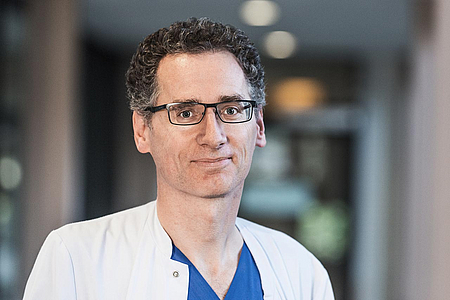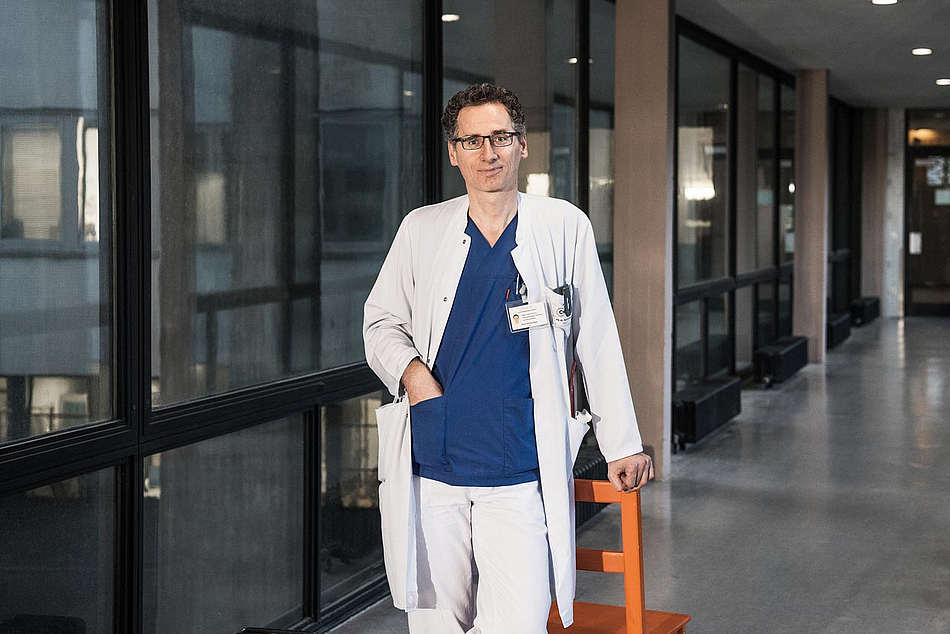Archeology in endoscopy
Dr. Daum, what field do you work in?
I work on the Benjamin Franklin Campus of the Charité – as I’ve done for 24 years now. My research focus is gastrointestinal oncology, which examines tumors of the esophagus, stomach, pancreas, liver and intestine. For some years, the focus of my research has been esophageal and gastric cancer and, in particular, how patients respond to different therapies. For example, one key research question concerns which imaging technique or molecular marker can be used to predict a patient’s response to a therapy.
What is the focus of your BIH Clinical Fellowship?
We examine gastroscopy samples from the archive using a new method – nanostring analysis – to ascertain their genetic characteristics. If a non-metastasized gastric carcinoma has been found in the staging process, many patients are first given chemotherapy and then undergo an operation. However, they respond to this chemotherapy with varying degrees of success. In the case of many patients, the tumor has already disappeared by the date of the operation, whereas with others it’s apparently unchanged. Based on the biopsy samples, we want to find out whether people who respond well to chemotherapy have certain genes in common. In the future, it might be possible to predict whether a therapy will be effective by examining the biopsy material. Otherwise, one can immediately operate or, if need be, choose a different form of therapy. This would prevent unnecessary chemotherapy treatments and allow patients to be given therapy on a more individual basis.
And how exactly do you do that?
Initially, it involved a lot of archive work. To begin with, we selected a large number of patient cases in which it was possible to say clearly whether they responded to chemotherapy or not. Next, we checked in the pathological archive to see whether the biopsy samples of those patients were available in a sufficiently good condition and selected further data on the specific tumor which was operated on. Samples stored in the archive used to be conserved through being treated with alcohol and wax, which unfortunately destroyed part of the DNA and RNA molecules. Also, some of the samples are very small, often making it difficult to extract sufficient tissue for analysis. However, using the nanostring method one has the option of examining even tiny amounts of RNA. As we had to start by checking about 600 patient files, this work was initially very time-consuming. The nanostring method itself is relatively new and expensive.
So, what led you to this subject?
This is a clinical issue which has bothered our research team for a long time. We have some patients to whom we recommend a treatment – but then in individual cases, we ultimately find that it hasn’t done them any good. We see them suffering under a useless therapy, and we want to change that. Apart from that, I find it very exciting to optimize things. At a personal level, it motivates me to bring new methods into daily clinical practice. The idea’s already been around for some time, but no useful method existed for examining such minute samples.
That only became possible after the nanostring method was developed. The next step will be to compile the results. If it works, one could potentially transfer the procedure and the data to patients whose tumors have already metastasized.
And what did the funding from the Charité Foundation mean for you?
Without the funding, the project would never have been possible. The application process was very uncomplicated – even though it involved a combination of material and human resources, in collaboration with colleagues from molecular pathology. Funds and programs for supporting such research should in fact be a standard feature of university clinics. In addition, being granted leave from work is an absolute must for enabling those interested to conduct their research.
October 2017 / TO and MM

Funding program
BIH Clinical Fellows
Funding period
2016 – 2018
Project title
Response prediction in adenocarcinomas of the gastroesophageal transition or stomach: Evaluation of new molecular markers using a pretest cohort
Research area
Oncology
Institution
Charité – Universitätsmedizin Berlin
1993 – 1995/1998 – Present
Clinical training and senior physician in gastroenterology with a clinical research focus on Refractory Celiac Disease, intestinal lymphomas and gastroenterological oncology, Division of Gastroenterology, Infectiology and Rheumatology, Charité – Universitätsmedizin Berlin
1996 – 1997
Research Fellow at the Laboratory for Molecular Pathology of Prof. Hummel/ Prof. Stein in the framework of a DFG education grant on “the role of cytokines and the extracellular matrix in hyperregenerative mucosal transformation”
1986 – 1993
Medical degree at the Technical University of Munich, PhD thesis on the expression of mRNA of cytokines in isolated intestinal lymph nodes
